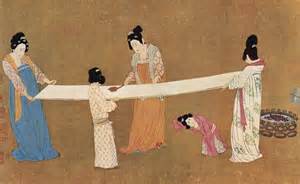The Silk Road

The Silk Road was a historical network of trade routes that stretched from China to the Mediterranean Sea, allowing cultural and economic interaction between East and West. Begun in the 2nd Century B.C., the Silk Road carried goods, ideas, and even illness for thousands of miles between great civilizations for more than a thousand years. The name (a popular variant of which is the Silk Route), however, is a modern construct, the creation of Germany's Ferdinand von Richthofen, who traveled to China several times in the second half of the 19th Century. Coming from the west was Alexander the Great, who assumed ownership of large swathes of land in Central Asia in the late 4th Century B.C. One of the cities he settled and named Alexandria, in what is now Tajikistan, in time became a popular trade market on the Silk Road. China's powerful Han Dynasty began expanding its trade routes toward the West in the years approaching 100 B.C., sending silk and other goods to other civilizations, at that time most notably India, Arabia, and Persia. Some shipments made it through to Europe and to northern and eastern Africa, through the port at Alexandria, but these were few and far between for many years. The Roman conquest of Egypt, in the 1st Century B.C., accelerated contact and trade between East and West. In the time of Augustus, hundreds of Roman shipments left Egypt for the East every year. (Not all goods were sent by land, of course. Water routes for shipping were common but not always a preferred option for traders.)
It wasn't only silk, however, that was carried along the Silk Road. Many other things tangible and intangible made their way from East to West, and vice versa. Chinese traders brought delicate porcelain plates and thin but durable paper money. Romans brought delicately carved pottery and intricately carved jewelry. Goods did not travel with the same person all along the route. Merchants carried shipments from major center to major center, and then others carried the goods farther on the route. Many merchants traveled in groups, called caravans. Many caravans and individual merchants traveled with bodyguards because theft along the routes was not uncommon. 
Several cities along the Silk Road became major trading centers. Some of the more famous of these were Alexandria, Karakorum, Antioch, Constantinople, and Persepolis. Local taxes placed on goods traveling along the route were quite common; as a result, many goods traveled only part of the way from East to West or from West to East. Also making the trip from East to West, and vice versa, were elements of culture. Traders learned the languages spoken by people in the East, in the West, and in the lands in between. Elements of religion and technology and commerce naturally changed hands, as contact between various peoples grew. Also making the trip along the Silk Road were diseases. One version of the bubonic plague traveled the length of the route, infecting many along the way. Other diseases introduced themselves into new fertile grounds in the East, or in the West, or somewhere in between. One of the most travelers on the Silk Road, according to the book that bears his name, was Marco Polo. His story takes him from Italy to China in the 13th Century. The Mongol conquest of China proved a mark of stability for the Silk Road, which by the Middle Ages had seen more than century of travel. In 1453, with the Muslim conquest of Constantinople, trade on the Silk Road declined markedly and never really recovered. As a result, European powers emphasized sea travel to the East more than ever. |
|
Social Studies for Kids
copyright 2002–2025
David White



 As its name suggests, the Silk Road was home to large amounts of silk, which made its way from China to the Mediterranean and, of course, to
As its name suggests, the Silk Road was home to large amounts of silk, which made its way from China to the Mediterranean and, of course, to 
